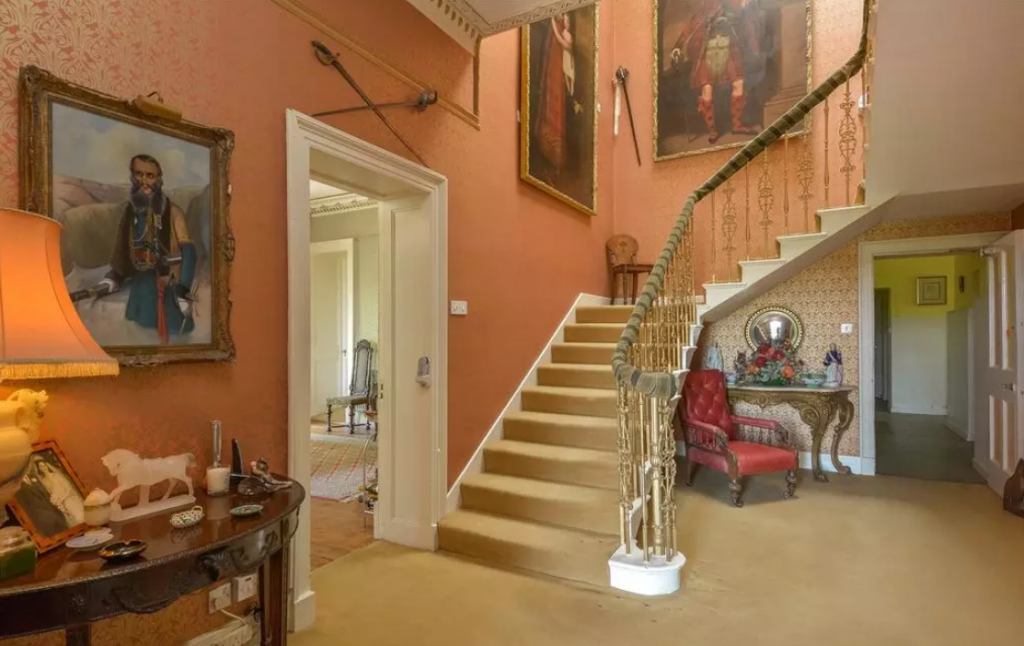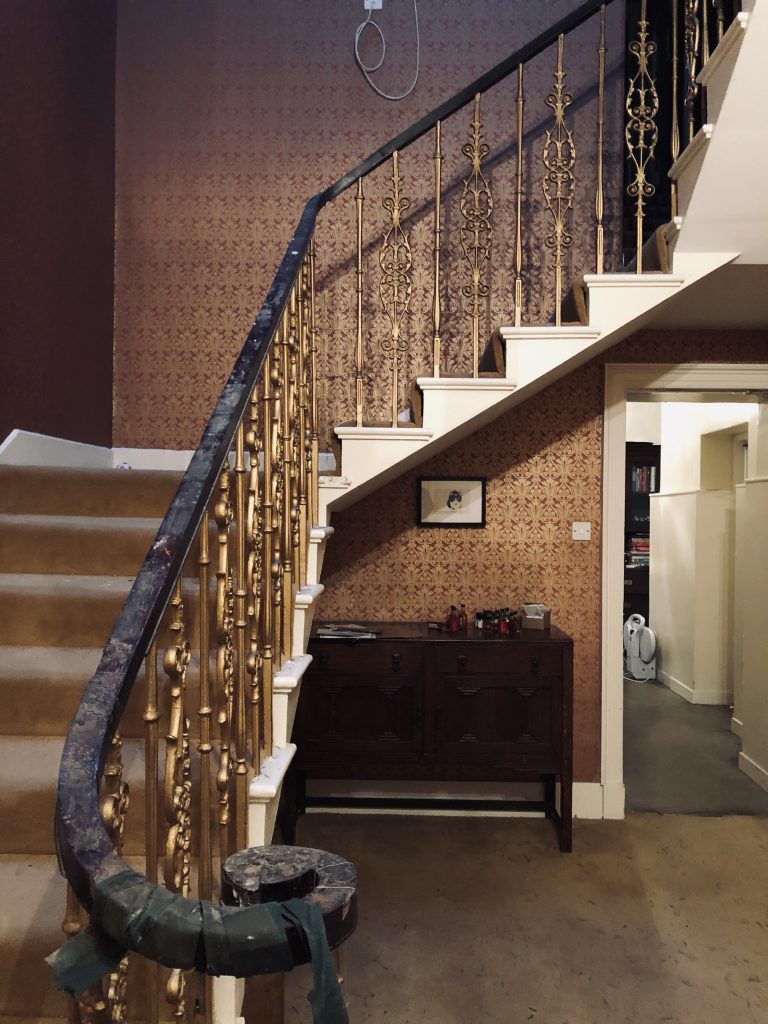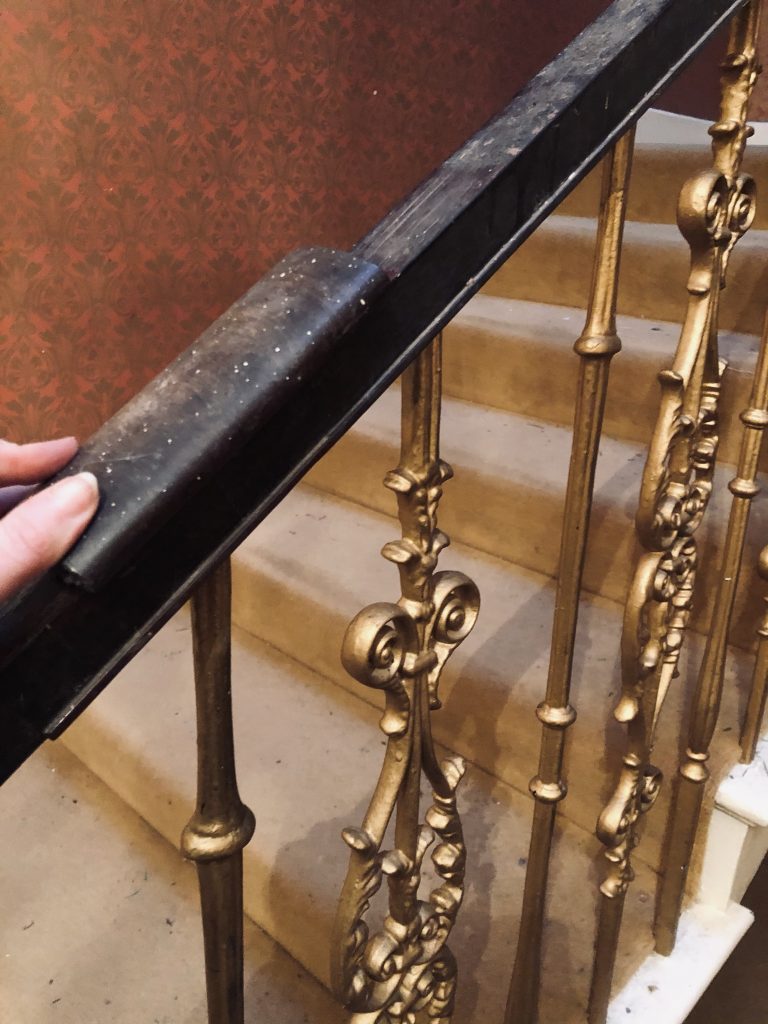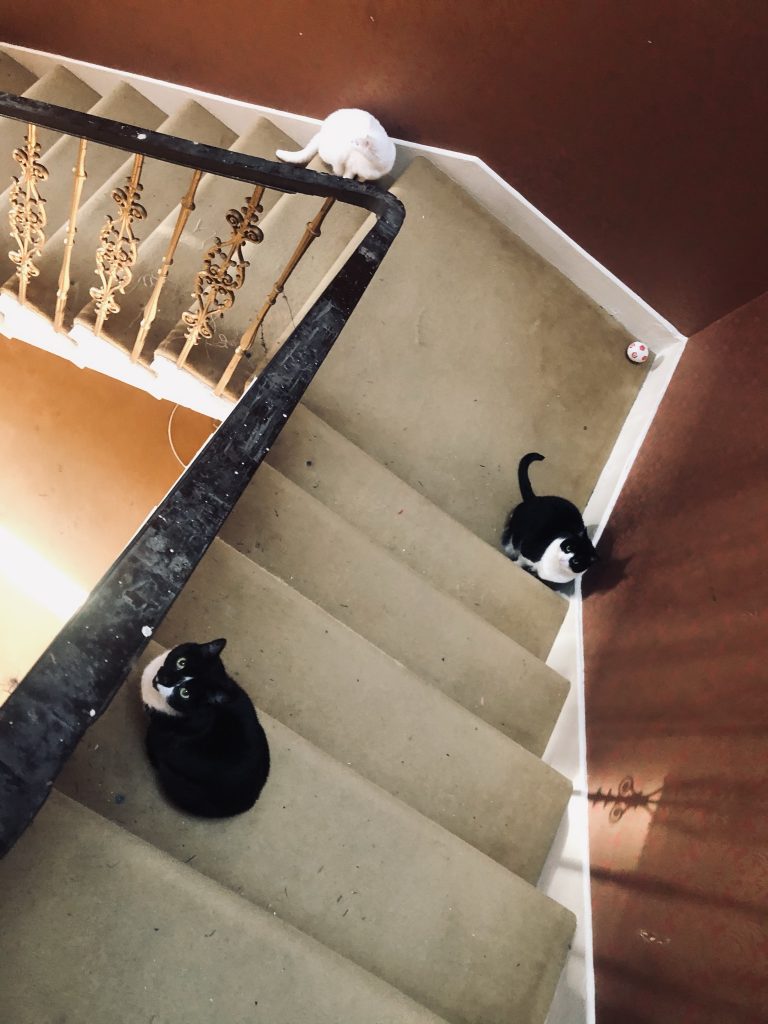One of Bardmony’s most beautiful features is, without doubt, the main staircase. Centering around a rather grand cupola, it features carved stone cantilevered steps and intricate cast iron spindles, gently winding up to the first floor (second, if you’re American…).
When we first viewed the house in late 2019, this staircase and cupola absolutely blew our minds – and became the gold standard against which we evaluated all other properties (“but it doesn’t have a cupola!” became a bit of a catch phrase…).
But there was a bit of a mystery… Can you spot it?

If you’re anything like us, you are wondering just what the deal with that green velvet bannister cover is.
We asked the estate agent when viewing what was under it, and we were assured the wooden bannister was in tact – and somewhere along the line, we were told that the cover had been added to help the elderly Mr. N-, as it provided better grip.
However, upon moving in, we started to wonder if the bannister was actually in tact: there was a noticeable difference between the feel of the top of the bannister on the first floor landing and the bannister along the staircase itself, and we knew Mr. N- had previously had a stairlift in place, so we began to wonder if the bannister had been partly removed to facilitate the stairlift mechanism.
As is often the case in a house requiring work, you uncover these little mysteries along the way and they sit in the back of your mind as tickly questions as you work through more pressing concerns. For the first few months we were in the house, we mused about the bannister off and on, but neither of us was brave enough to do anything beyond a few cursory prods in a loose seam.
But, a few weeks ago, we had a carpenter out to look at the floor in the master bedroom and we thought it was an opportune time to get a professional opinion, so, naturally, we ripped the cover off. 🤣
The amount of dust and detritus that was shaken loose by the removal immediately put paid to our assumption that the cover was recent – it was clear that the cover had been in situ for a lot longer than even 10-15 years. And what we uncovered was definitely sad, but not exactly surprising, following our brief forays into the loose seam: the bannister rail was, sadly, almost entirely gone, aside from a few haphazardly (and oddly?) chopped pieces left on the flat along the first floor landing. The bannister core remained, though with some significant damage to the scroll at the bottom of the staircase and various bits of missing mahogany veneer here and there along the sides.
Here it is, in its glory:



Despite the set back with the missing bannister, though, I think it’s lovely to be able to see the bones of how it COULD look – and now, we at least know what we need to budget for 😅
Interestingly, a few weeks ago, we had a call with one of the N- sisters where we had the opportunity to ask if she could remember the bannister before the cover and if she knew when the bannister rail had been removed.
She told us that her mum had sewn the cover right after her parents bought the house for fear of her little girls sliding down the bannister and getting hurt. It’s such a touching thought, as that bannister cover was an absolutely Herculean endeavor, and only a mother’s love would have waded through that task!! She herself was born after her parents bought the house, so she did not remember a time without it.
She did, however, relay that the bannister rail was missing when her parents had bought the house in the 70s. According to the N- family story on this topic, the cousins they bought the house from were on quite hard times by then, and had been forced to chop up various bits of furniture to toss on the fires to stay warm in the winter – and as unbelievable as it may be, the nearly 200 year old bannister had been sacrificed to this same basic necessity.
So, there you have it – the Great Bannister Mystery – solved!
Wow, that’s a very interesting story. Imagine having to chop up the banister for fire wood?!